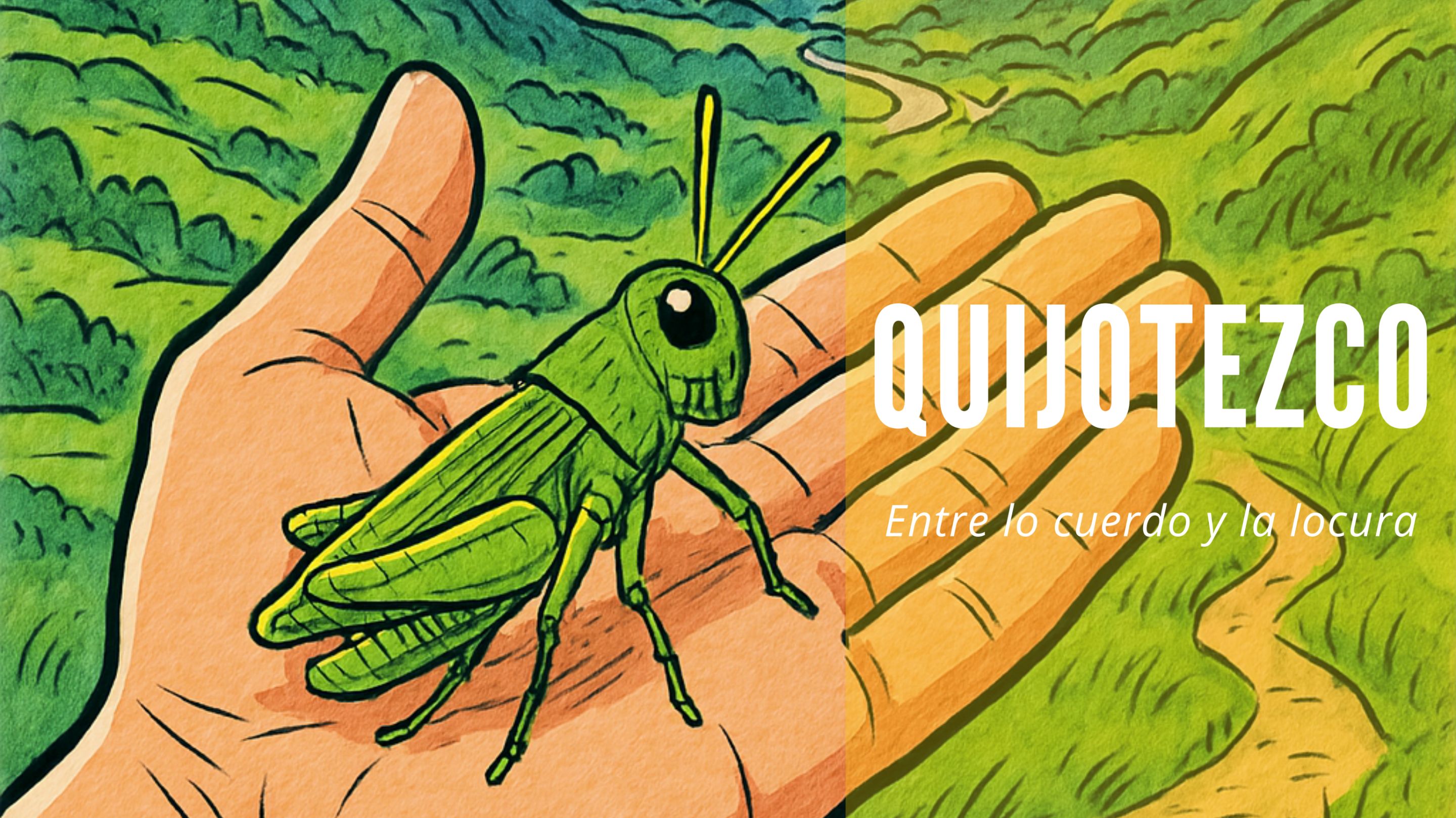

## **Bienvenidos**
## **Bienvenidos**

## **Welcome**
---
## **Welcome**
En medio de una inspección técnica en la vía que conecta la carretera nacional del páramo merideño hacia el sector Don Perucho, ocurrió algo que no estaba en el cronograma, pero sí en el corazón. Las lluvias recientes de la pasada vaguada causado estragos en Mérida: desbordamientos, erosión, puentes comprometidos, comunidades incomunicadas. El río Chama, como un animal inquieto, había sobrepasado sus límites, afectando sectores como El Arenal, Don Perucho y San Jacinto, donde el agua cruzó el puente que conecta estas comunidades (https://www.reporterosdemerida.com.ve/2025/06/paramo-en-alerta-lluvias-por-varias.html).
Mientras conversaba con un señor del sector, un hombre curtido por la montaña y la memoria ya que el venia de un pueblo del sur de Mérida, sobre los trabajos que debían realizarse con maquinaria tipo jumbo para canalizar el río, quitar el taponamiento que hiso que el agua afectara la vialidad, y evitar futuras emergencias, un pequeño visitante interrumpió la lógica del momento. Un chapulín, saltamontes o langosta de tierra, se posó sobre mi mano. No lo espanté. Él tampoco huyó. Se quedó allí, como si quisiera escuchar, como si supiera que hablábamos de su casa.
Este gesto mínimo, casi invisible para quien no está atento, me recordó que la naturaleza no solo se manifiesta en grandes eventos, sino que también se revela en lo pequeño, en lo que salta sin ruido, en lo que se posa sin permiso. El chapulín, más allá de su biología, tiene una carga simbólica profunda. En la tradición mesoamericana, fue considerado un símbolo de poder sobrenatural por los mexicas, y aparece en códices como el Boturini y el Mendoza, donde se usa para representar el topónimo de Chapultepec: “cerro del chapulín” (https://mxc.com.mx/2019/03/20/el-chapulin-la-hormiga-y-el-ciempies-formaban-parte-del-arte-mesoamericano/).
En el Museo Nacional de Antropología de México se conserva una escultura de un chapulín tallado en piedra roja, posiblemente una ofrenda prehispánica. Su presencia en el arte ritual y en la alimentación —hay más de 50 especies comestibles en México, ricas en proteínas y minerales— revela que este insecto ha sido parte de la vida humana desde hace siglos, no solo como alimento, sino como símbolo de resiliencia y conexión con la tierra (https://arqueologiamexicana.mx/mexico-antiguo/chapulines).
In the middle of a technical inspection on the road that connects the national highway from the Mérida páramo to the Don Perucho sector, something happened that wasn't on the schedule, but was certainly close to my heart. The recent rains from the last low-flow river caused havoc in Mérida: overflows, erosion, damaged bridges, and isolated communities. The Chama River, like a restless animal, had surpassed its limits, affecting sectors such as El Arenal, Don Perucho, and San Jacinto, where the water crossed the bridge that connects these communities (https://www.reporterosdemerida.com.ve/2025/06/paramo-en-alerta-lluvias-por-varias.html).
While I was talking with a local man, a man hardened by the mountains and memory since he came from a town south of Mérida, about the work that needed to be done with jumbo jets to channel the river, remove the blockage that had caused the water to affect the road, and prevent future emergencies, a small visitor interrupted the logic of the moment. A grasshopper, or locust, landed on my hand. I didn't shoo it away. Nor did it flee. It stayed there, as if it wanted to listen, as if it knew we were talking about its home.
This minimal gesture, almost invisible to the inattentive, reminded me that nature not only manifests itself in grand events, but also reveals itself in the small, in what jumps soundlessly, in what lands without permission. The grasshopper, beyond its biology, carries a profound symbolic charge. In Mesoamerican tradition, it was considered a symbol of supernatural power by the Mexica, and appears in codices such as the Boturini and the Mendoza, where it is used to represent the name Chapultepec: "grasshopper hill" (https://mxc.com.mx/2019/03/20/el-chapulin-la-hormiga-y-el-ciempies-formaban-parte-del-arte-mesoamericano/).
A sculpture of a grasshopper carved in red stone, possibly a pre-Hispanic offering, is preserved in the National Museum of Anthropology in Mexico. Its presence in ritual art and food—there are more than 50 edible species in Mexico, rich in protein and minerals—reveals that this insect has been part of human life for centuries, not only as food, but as a symbol of resilience and connection to the earth (https://arqueologiamexicana.mx/mexico-antiguo/chapulines).
---
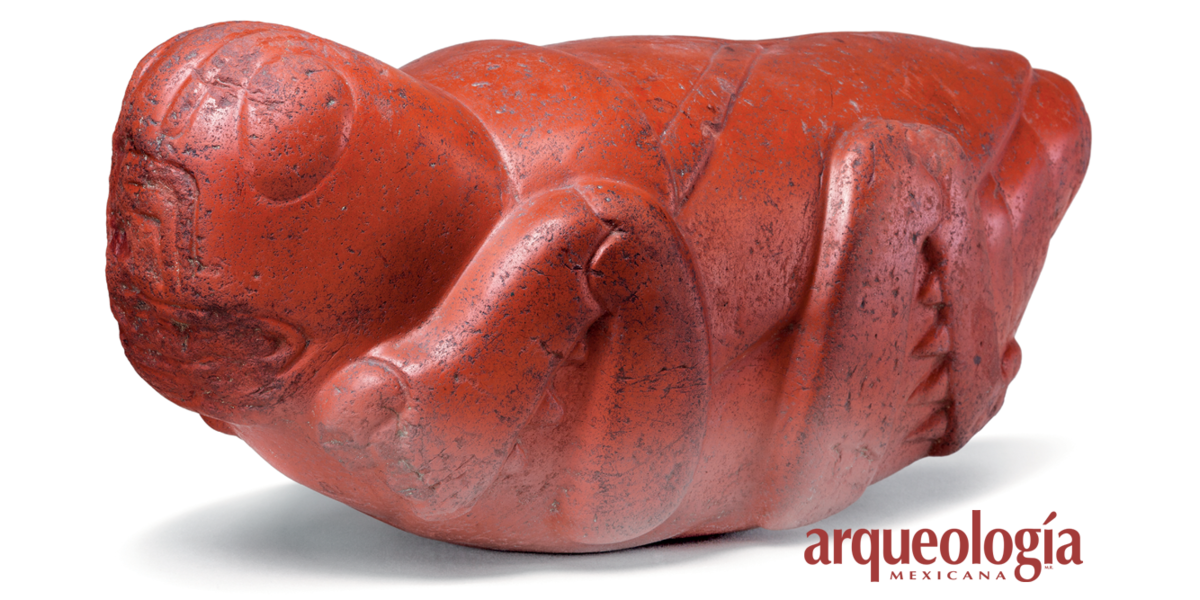
[Fuente](https://arqueologiamexicana.mx/mexico-antiguo/chapulines)
---
Ahora bien, aunque no soy entomólogo, busque en la web quien era este amiguito ya que quería comprender con claridad su papel en los ecosistemas y su impacto en la agricultura, que de seguro lo tiene.
Ahora bien, aunque no soy entomólogo, busque en la web quien era este amiguito ya que quería comprender con claridad su papel en los ecosistemas y su impacto en la agricultura, que de seguro lo tiene.
Pero lo primero que me llamo la atención fueron los nombres que se les dan: saltamontes, chapulines, langostas, charates, burras o sanagustines… todos estos nombres se refieren a insectos del suborden Caelifera, dentro del orden Orthoptera. Son herbívoros, con patas traseras adaptadas para el salto, antenas cortas y dos pares de alas, aunque no todas las especies vuelan con facilidad y en algunos casos son tratados como una plaga para la agricultura (ver: https://es.wikipedia.org/wiki/Caelifera).
La diferencia clave entre un “saltamontes” y una “langosta” no es taxonómica, sino de comportamiento. Algunas especies de saltamontes pueden transformarse en langostas cuando las condiciones ambientales lo favorecen, como por ejemplo una sequía seguida de abundante vegetación, lo que puede desencadenar un cambio neuroquímico (aumento de serotonina), que los vuelve gregarios y migratorios. Es entonces cuando forman enjambres devastadores que arrasan cultivos (Ver: https://es.wikipedia.org/wiki/Langosta_(insecto)).
Now, although I'm not an entomologist, I looked up who this little fellow was on the web, as I wanted to clearly understand his role in ecosystems and his impact on agriculture, which he certainly has.
Now, although I'm not an entomologist, I looked up who this little fellow was on the web, as I wanted to clearly understand his role in ecosystems and his impact on agriculture, which he certainly has.
But the first thing that caught my attention were the names given to them: grasshoppers, chapulines, locusts, charates, burras, or sanagustines… all of these names refer to insects of the suborder Caelifera, within the order Orthoptera. They are herbivores, with hind legs adapted for jumping, short antennae, and two pairs of wings, although not all species fly easily and in some cases are treated as agricultural pests (see: https://es.wikipedia.org/wiki/Caelifera).
The key difference between a "grasshopper" and a "locust" isn't taxonomic, but behavioral. Some grasshopper species can transform into locusts when environmental conditions favor it, such as a drought followed by abundant vegetation, which can trigger a neurochemical change (increase in serotonin) that makes them gregarious and migratory. This is when they form devastating swarms that devastate crops (See: https://es.wikipedia.org/wiki/Langosta_(insecto)).
---
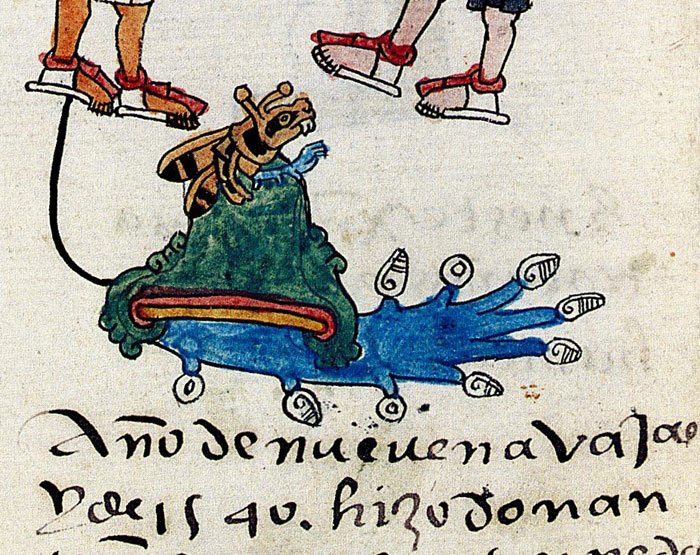
[Fuente](https://mxc.com.mx/2019/03/20/el-chapulin-la-hormiga-y-el-ciempies-formaban-parte-del-arte-mesoamericano/)
---
Otra cosa que me llamo la atención, es que en América Latina, el término “chapulín” se usa especialmente en México para referirse a estos insectos, lo que me indica que tal nombre fue acogido por quien creo la serie de televisión el “Chapulín Colorado”, y en algunos lugares incluso se consumen como alimento, aprovechando su alto contenido proteico.
Como profesor universitario, aunque no en el área de la entomología, veo con gran interés todo aquello que aborda el tema de sostenibilidad, sobre todo en estos tiempos de crisis ambiental, me parece crucial entender cómo estos pequeños organismos pueden enseñarnos sobre resiliencia, cambio climático y manejo agroecológico. No se trata solo de combatirlos, sino de comprenderlos en su medio.
Pero volvamos al páramo y a la inspección que estaba realizando. Las lluvias del 24 de junio dejaron huellas profundas: deslizamientos, colapso de vías, daños a viviendas y cultivos. Más de 24.000 familias resultaron afectadas en toda la entidad, según reportes oficiales (https://www.radiofeyalegrianoticias.com/comunidades-del-paramo-merideno-comienzan-a-recuperarse-tras-las-lluvias/). En sectores como Don Perucho, la maquinaria pesada se hace urgente, pero también la necesidad de ser escuchados, el diálogo, la presencia. Porque reconstruir no es solo levantar muros, sino también sanar vínculos.
El chapulín sobre mi mano fue un recordatorio de eso. De que en medio de la urgencia técnica, también hay espacio para lo simbólico. Que liderar implica detenerse, observar, dejarse encontrar por lo inesperado. Que la resiliencia no siempre grita: a veces salta, a veces se posa, a veces simplemente está.
Y así, mientras el señor del sector hablaba de los años que lleva viendo crecer ese río, yo pensaba en cómo ese pequeño insecto me había encontrado. No fue casualidad. Fue señal. Porque en el páramo, donde la vida se abre paso entre la neblina y la piedra, todo encuentro tiene sentido.
Hoy, más que nunca, necesitamos mirar con otros ojos. No solo los del ingeniero, el técnico o el funcionario. También los del poeta, el caminante, el que se deja tocar por un chapulín en plena inspección. Porque si algo nos enseñan estos momentos es que la reconstrucción empieza por el alma.
Another thing that caught my attention is that in Latin America, the term "chapulín" is used especially in Mexico to refer to these insects, which tells me that this name was coined by the creator of the television series "El Chapulín Colorado," and in some places they are even consumed as food, taking advantage of their high protein content.
As a university professor, although not in the field of entomology, I view with great interest anything that addresses the topic of sustainability, especially in these times of environmental crisis. I believe it is crucial to understand how these small organisms can teach us about resilience, climate change, and agroecological management. It's not just about combating them, but also about understanding them in their environment.
But let's return to the páramo and the inspection I was conducting. The rains of June 24 left deep scars: landslides, collapsed roads, damage to homes and crops. More than 24,000 families were affected throughout the state, according to official reports (https://www.radiofeyalegrianoticias.com/comunidades-del-paramo-merideno-comienzan-a-recuperarse-tras-las-lluvias/). In areas like Don Perucho, heavy machinery is urgently needed, but so is the need to be heard, to engage in dialogue, to be present. Because rebuilding isn't just about building walls, but also about healing bonds.
The grasshopper on my hand was a reminder of that. That amid technical urgency, there is also room for the symbolic. That leading involves stopping, observing, and allowing oneself to be encountered by the unexpected. That resilience doesn't always scream: sometimes it jumps, sometimes it perches, sometimes it simply exists.
And so, while the man from the area talked about the years he's been watching that river grow, I thought about how that little insect had found me. It wasn't a coincidence. It was a sign. Because in the moor, where life makes its way between mist and stone, every encounter has meaning.
Today, more than ever, we need to see things with different eyes. Not just those of the engineer, the technician, or the civil servant. But also those of the poet, the hiker, the one who lets a grasshopper touch him during an inspection. Because if these moments teach us anything, it's that reconstruction begins with the soul.
---
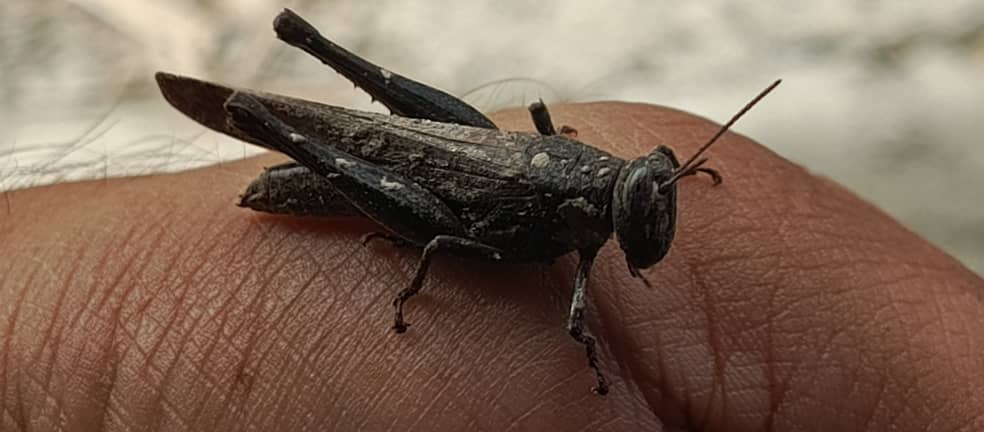
---
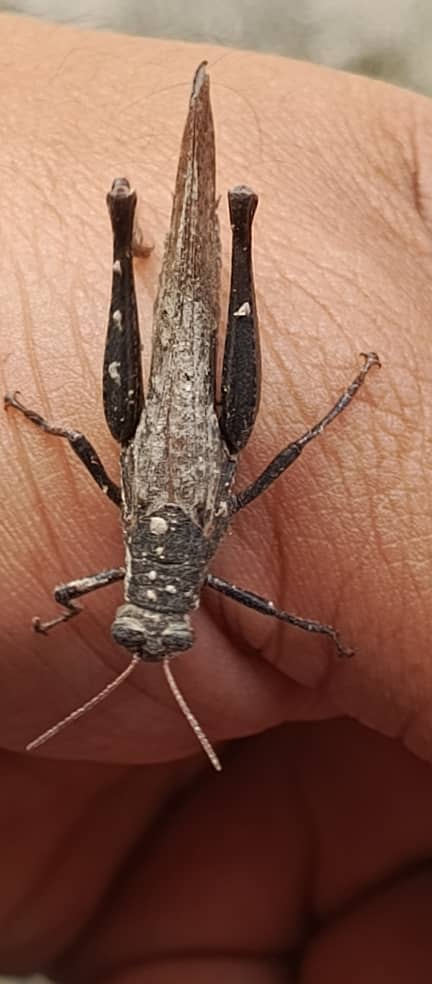
---
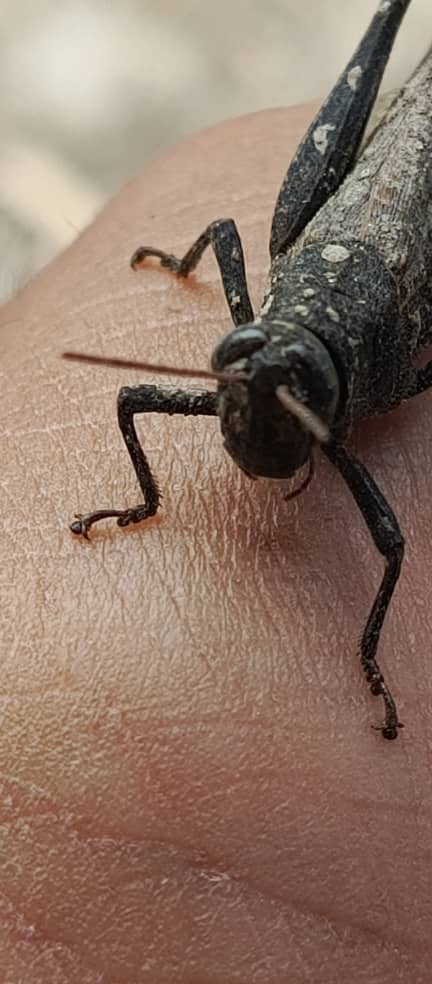
---
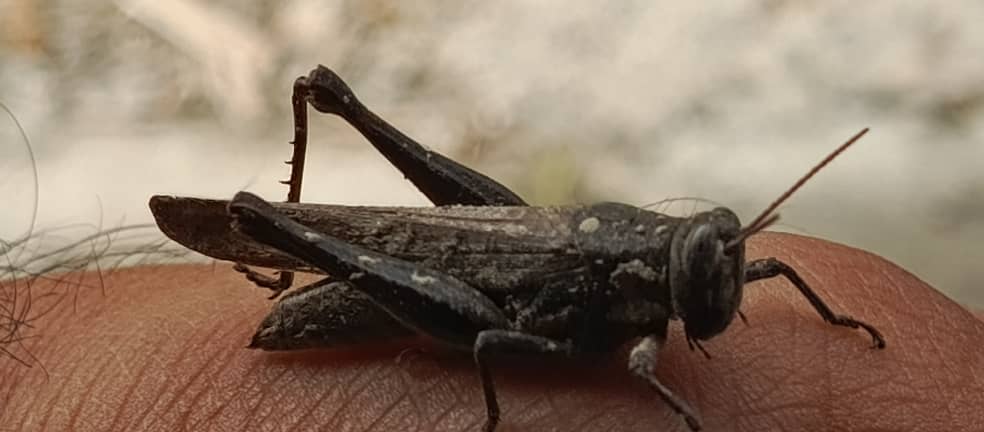
---

## **Gracias por leer y votar este post...**
# **Un abrazo!**
# **Hasta otra oportunidad!**
## **Thank you for reading and voting this post...**
# **A hug!**
# **See you again!**
---
La imagen principal del post fue creada con Microsoft Designer, utilizando tecnología DALL·E 3 y diseñada en Canva
The main image of the post was created with Microsoft Designer, using DALL·E 3 technology and designed in Canva
Los separadores fueron hechos con Canva.
The dividers were made with Canva.
Para este post me apoye en google traductor
For this post I relied on Google Translate.
Nota: todas las imágenes son de mi propiedad, tomadas con mi movil Infinix hot 40
Note: All images are my property, taken with my Infinix Hot 40 mobile.
#spanish
#rutablockchain
#insects
#photography
#nature
#qurator
#vidapersonal
#entropia
Payout: 0.000 HBD
Votes: 36
More interactions (upvote, reblog, reply) coming soon.